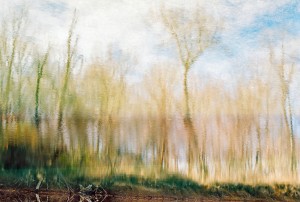 When I revise my work, or when I’m editing someone else’s work, there are two main elements I consider.
When I revise my work, or when I’m editing someone else’s work, there are two main elements I consider.
The first is story structure: what the story is.
The second is reader experience. This is how the story is told.
Structure first.
When I revise, the first thing I do is a quick read through. I look at what’s working, and what isn’t, just in general notes.
From there, I look at how the story is constructed. I double-check my plot outline. If I’m working with someone who is revising, a student or coaching client, then I’ll have them create a chart of every scene.
I’ll double check that the characters all want something. That what they want is big; that the reason for what they want is understandable and urgent. That the obstacles in the way of the want are equal to, or even larger than, the scope of what they want.
I’ll then ensure that each scene is essentially a mini version of the larger story, until I get to the resolution scenes.
When I’m satisfied that the story itself is sound — that the characters are both consistent and well developed, that the plot line demonstrates that arc in a satisfactory way with an escalating conflict — then I’m able to move forward to reader experience.
“What am I trying to accomplish with this scene?”
Scenes are the basic building blocks of any story, and reader experience is built scene by scene.
When you’re working with structure, you’re looking at the macrocosm. When you’re working with reader experience, you’re going microcosm. It’s holographic: each small piece reflects the whole.
Confident that you know where your story is going and how it works, you’re going to look at each scene and ask: how can this scene support the story?
What does the genre expect? Do you play to expectations, or experiment? And why do you want to? How will that make the story better for the reader?
Why are you choosing this POV character instead of another one? Does his external voice (dialogue) match his internal voice (exposition?)
Why have you chosen this point of view? Do you want the closeness and immediacy of first person? Or the almost clinical distance of third — not deep third, but more “narrative” third — or even omniscient?
How can you get the scene to accomplish more than one thing? How can you layer the scene, multi-tasking both character development, conflict escalation, and maybe some subtext and theme?
Is the scene anchored? Can the setting help accomplish, say, setting emotion or theme?
Is the scene visually boring? Can you add something — Elizabeth Berg calls it a Talking Head Avoidance Device — that is interesting in and of itself while still imparting crucial information? Instead of sitting at a coffee house talking about what’s happening, can they be at a dance-a-thon? Or working out at the gym? Or at target practice? How can you shift this around?
Toggling.
You’ll also look at how the scenes work together: from micro back to macro.
Do you have too many scenes in one character’s POV, so that another POV character essentially disappears? (See Happy Days, where Richie’s older brother goes upstairs for skis… and never comes back down.) Is everyone getting enough screen time? If you have one scene with a non-major character’s POV, why? And do you think the reader will appreciate it for what it is, or be frustrated at getting close to a character that essentially disappears without an arc?
Do you have too many action scenes back to back, so the reader is essentially “falling asleep at the edge of his seat?”
Do you have repetitive conflict? Or repetitive anything, for that matter?
Does each scene carry you into the next one? Or is there a “stopping” point that’s essentially a fat speed bump in your novel?
Sequence matters.
One of my best friends has to polish each scene before she can move forward in writing a story. I’ll be honest — this baffles the hell out of me. In my mind, getting the story laid out is like framing a house. If I polished before I got the mechanics worked out, it’d be like getting one room framed, putting in all the stuff, wallpapering and carpeting and painting… and then ripping a lot of it out, because I realize I’d gotten the electrical wrong.
Of course, people vary. If it’s your process, you need to honor what works for you.
But if you’ve been flailing a little in the revision process, and you’re not sure how to proceed, I’d recommend trying it this way:
Zoom out: structure.
Zoom in: scene work.
Toggle: Scene sequence.
Every element supports the other. And when you’re finished, like an impressionist painting, it will create a cohesive whole.

I stumbled across this website when I was looking for help on “show v tell” and I’m so glad I did! This is so informative, and I’m looking forward to trawling through all of the posts!
I have a really strange way of editing. I’ll write the first draft, not caring about the writing or the plot holes or anything. I keep powering on with the thought process that I’ll edit later.
I then do a general sweep of the entire story. Just looking for general stuff, familiarizing myself with the final plot line. Then I’ll edit in “chunks.” I’ll take the first 9 chapters, and fix the plot holes, make the characters consistent, and do line by line edits. I’ll make it as polished as possible. Then I repeat for the next 9 chapters. I have no idea why I do it like this, but it seems to work for me 🙂